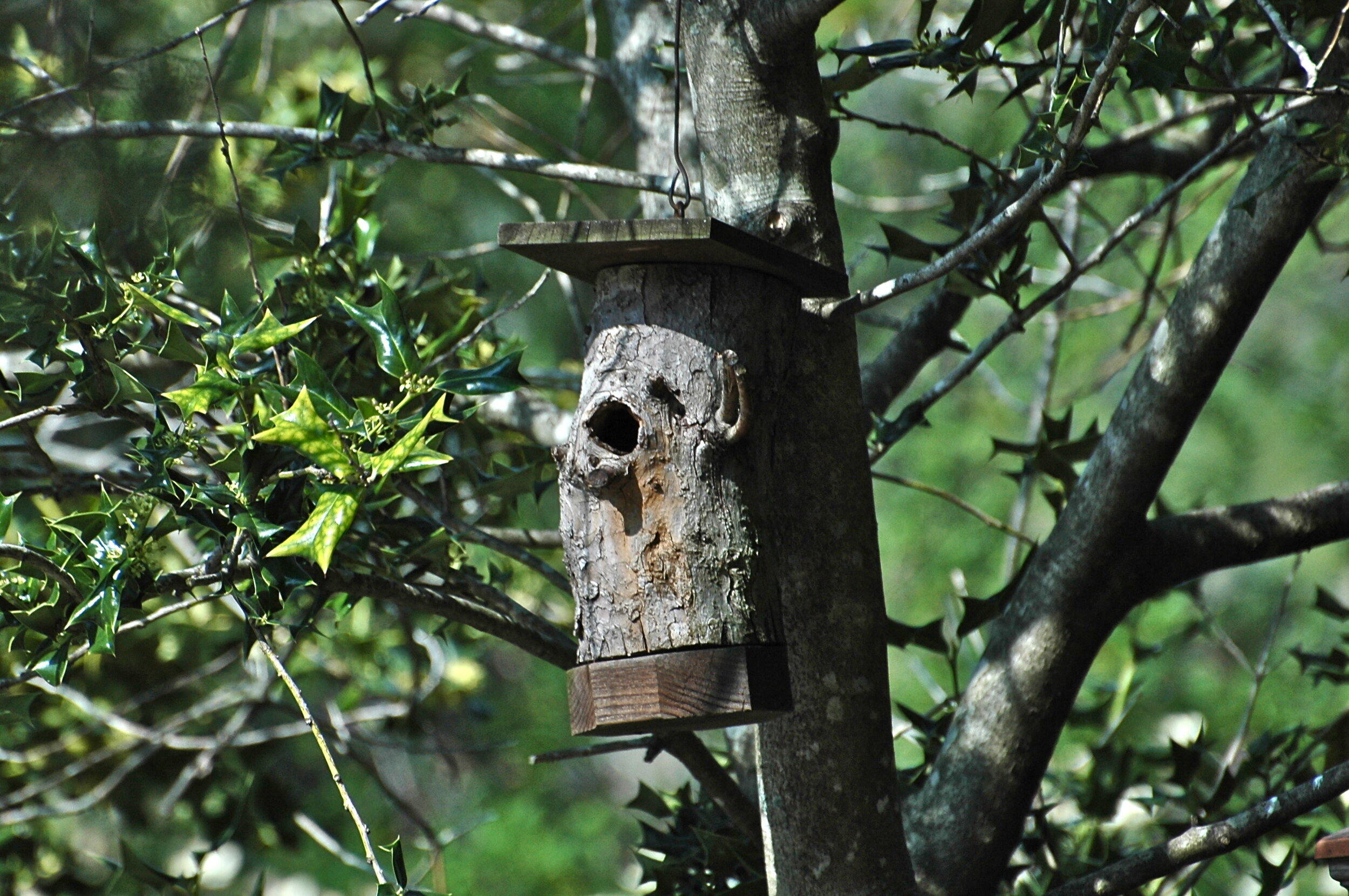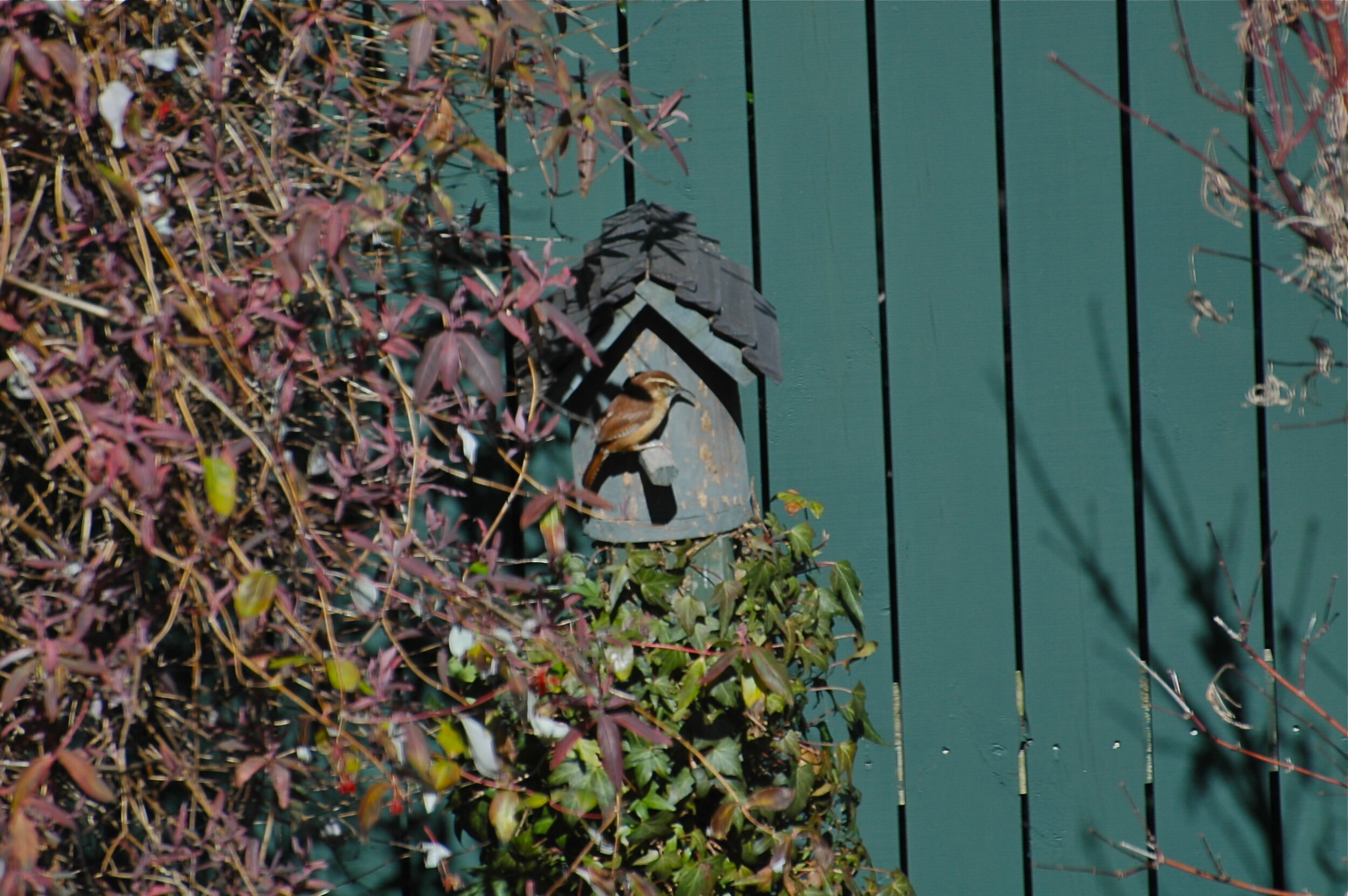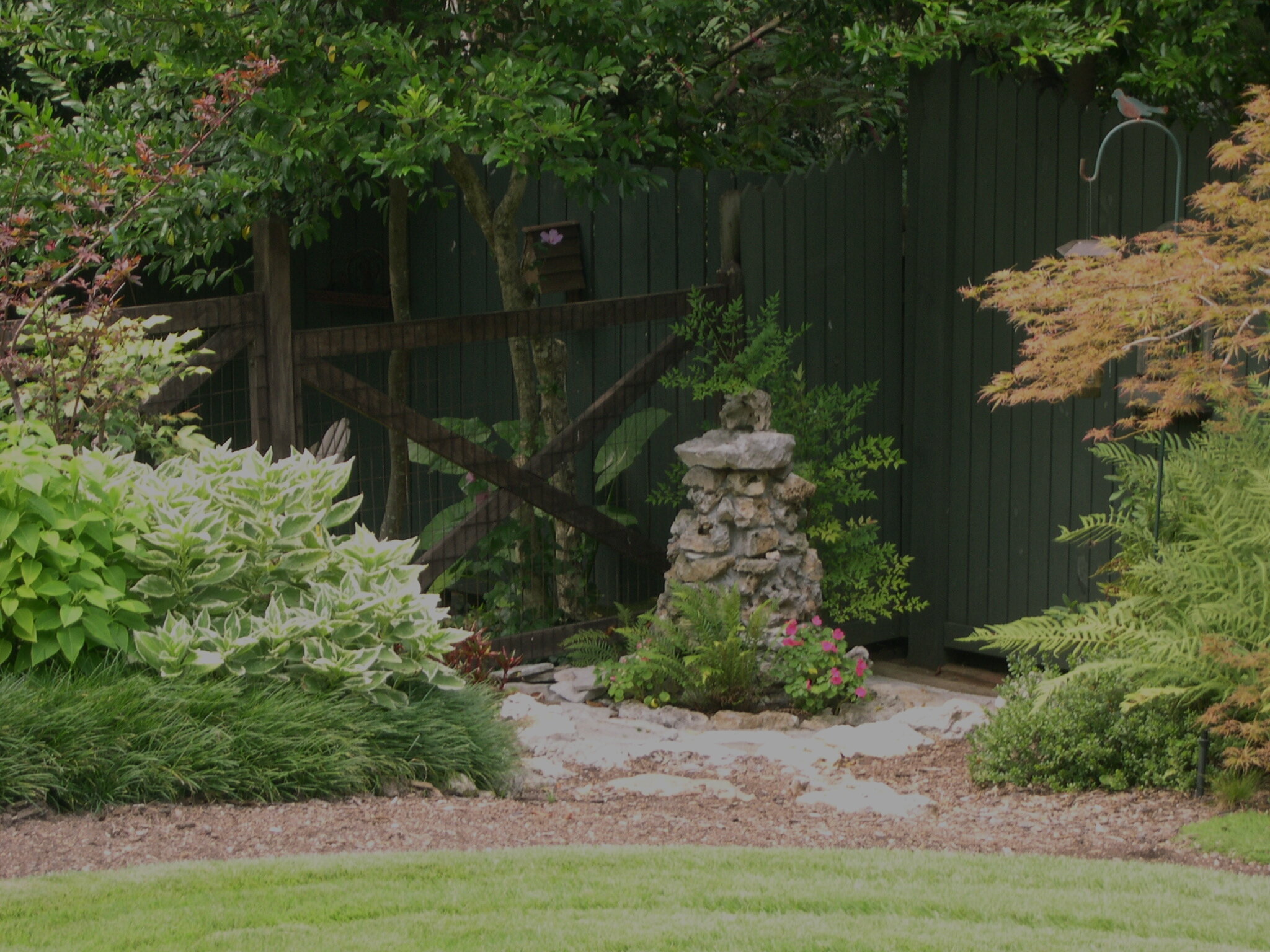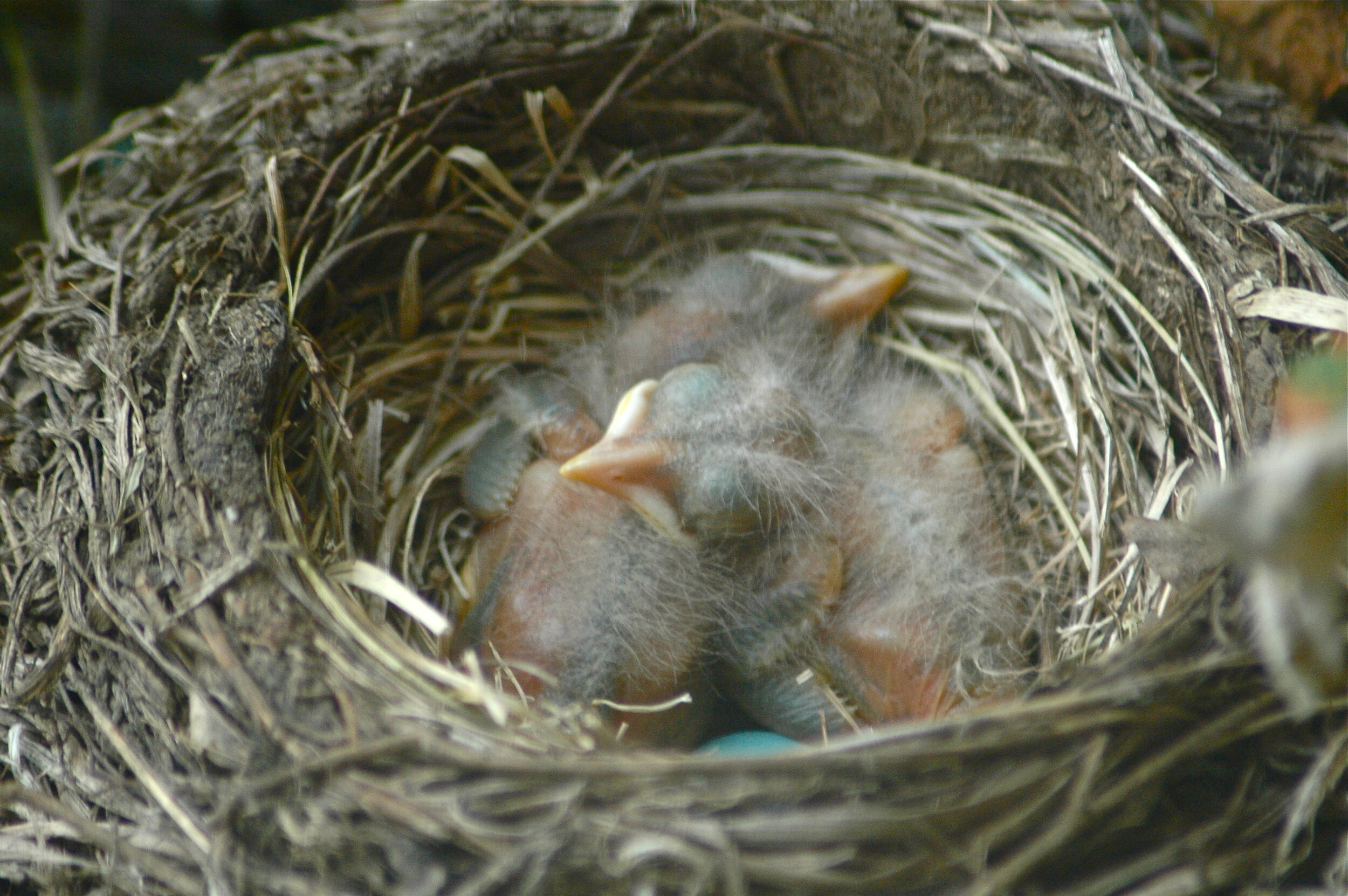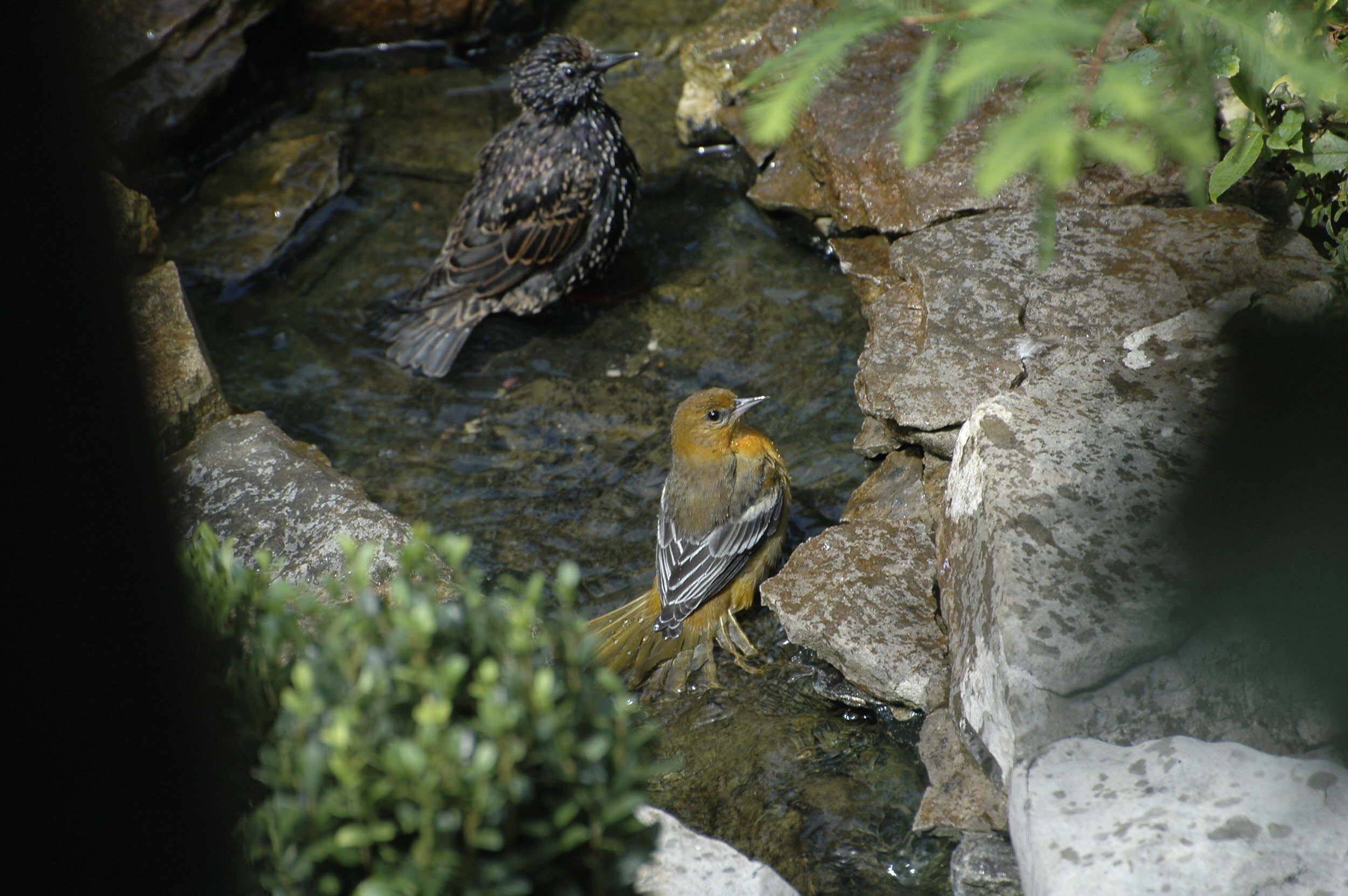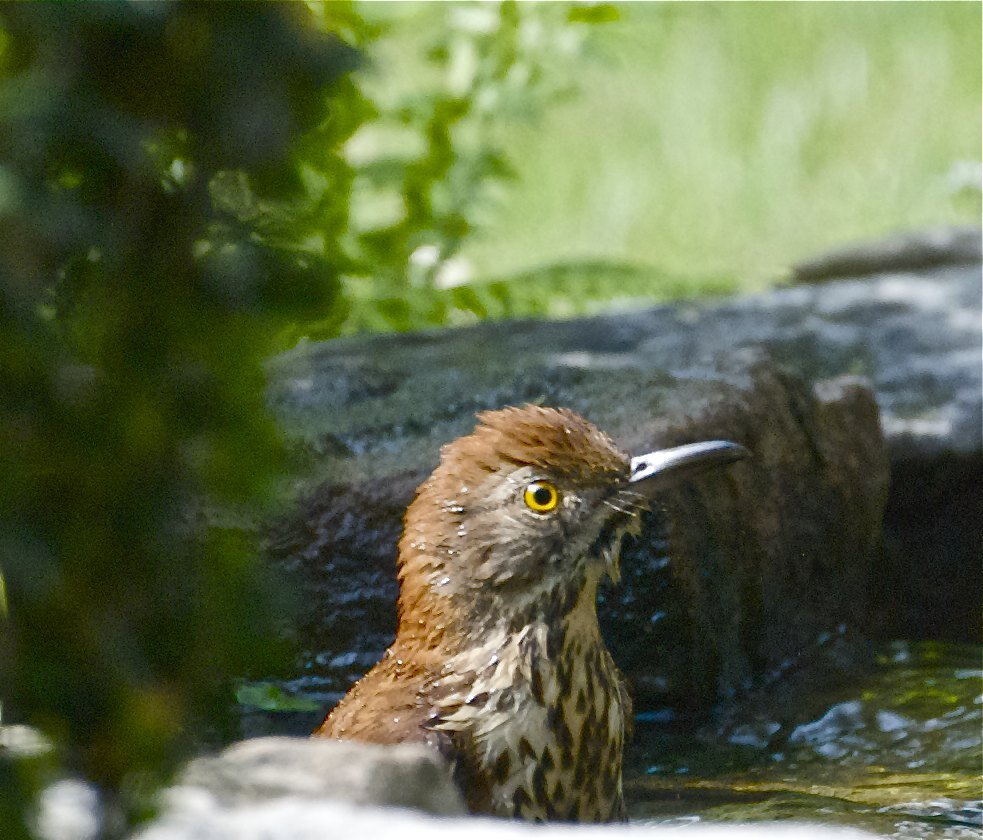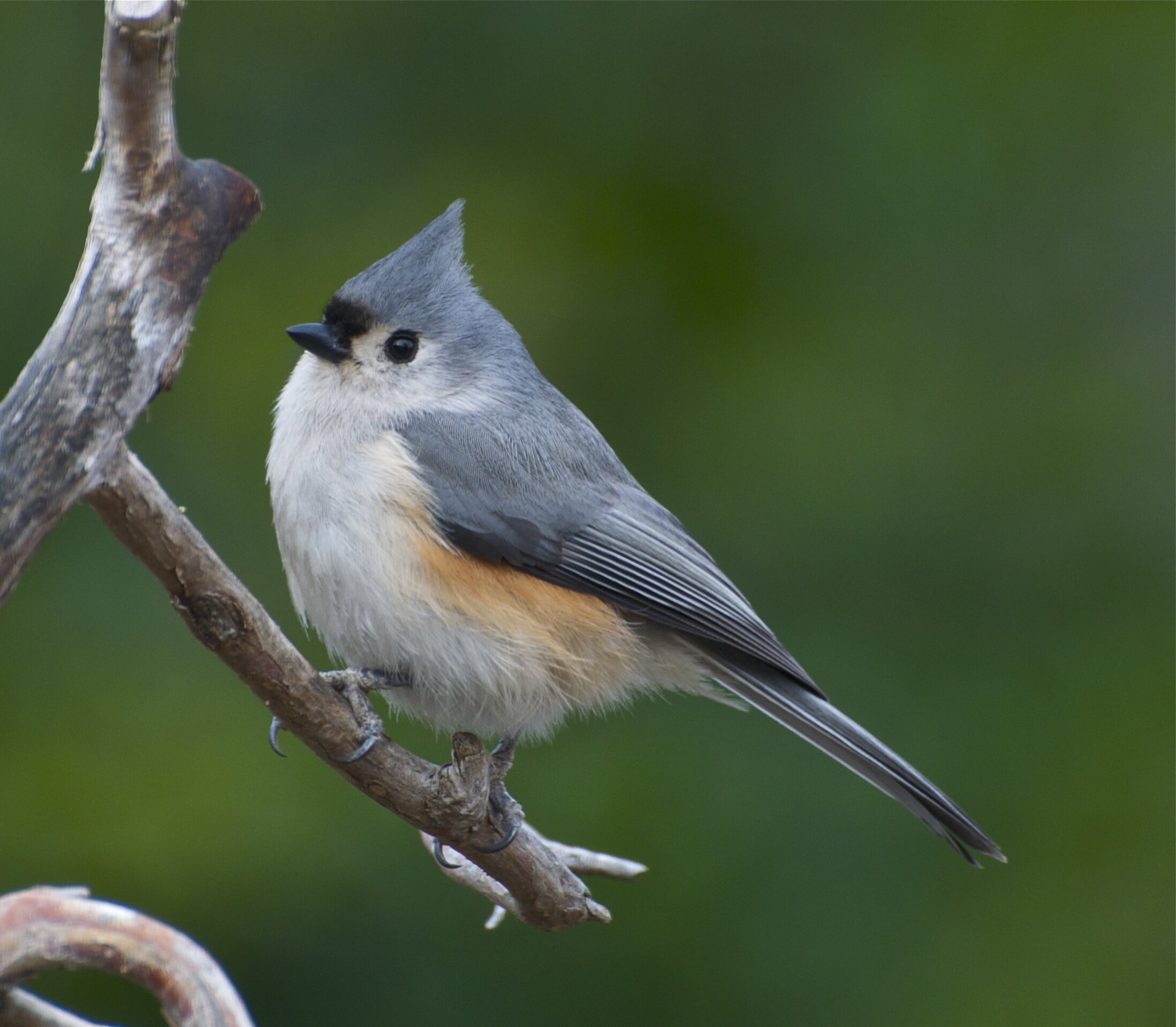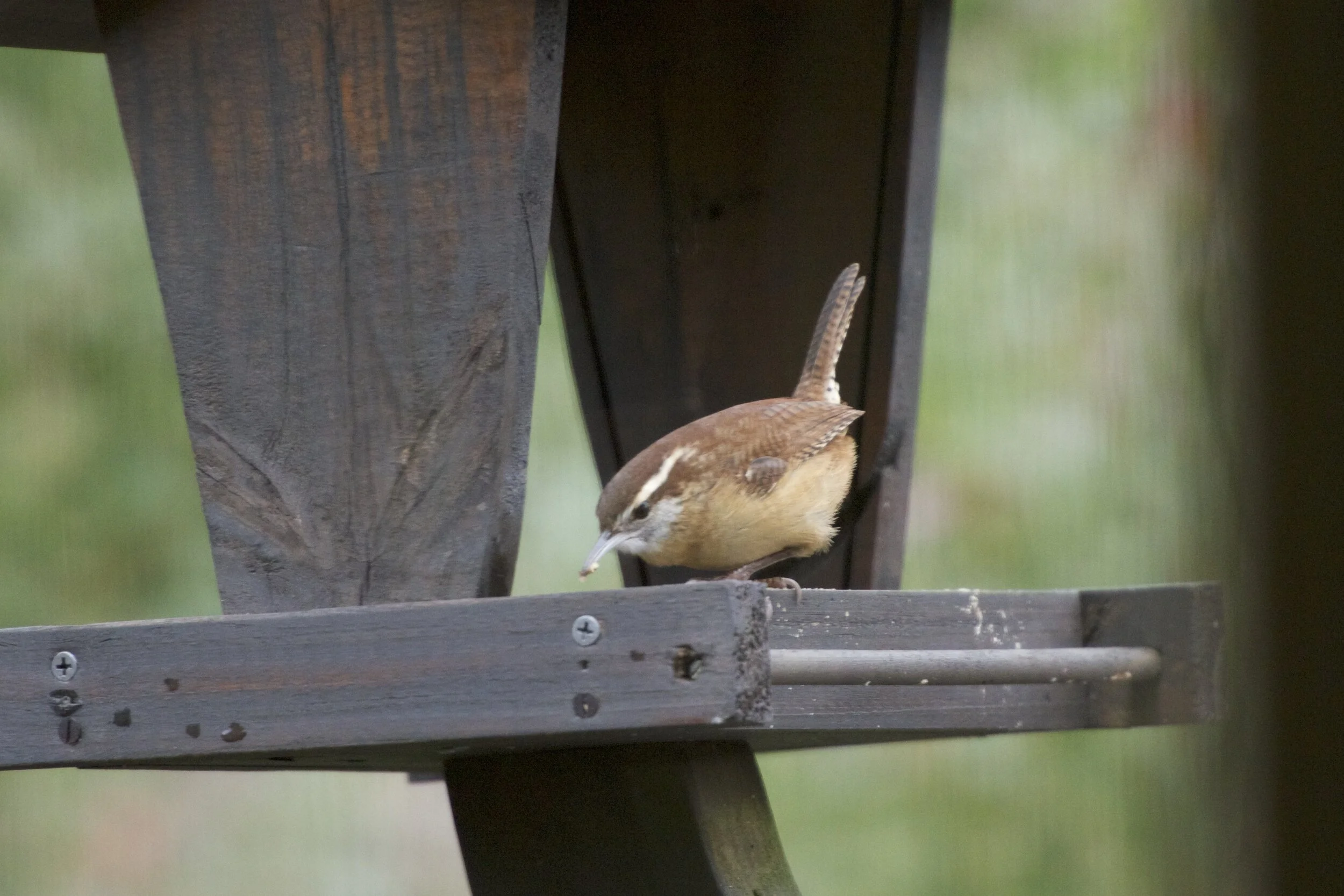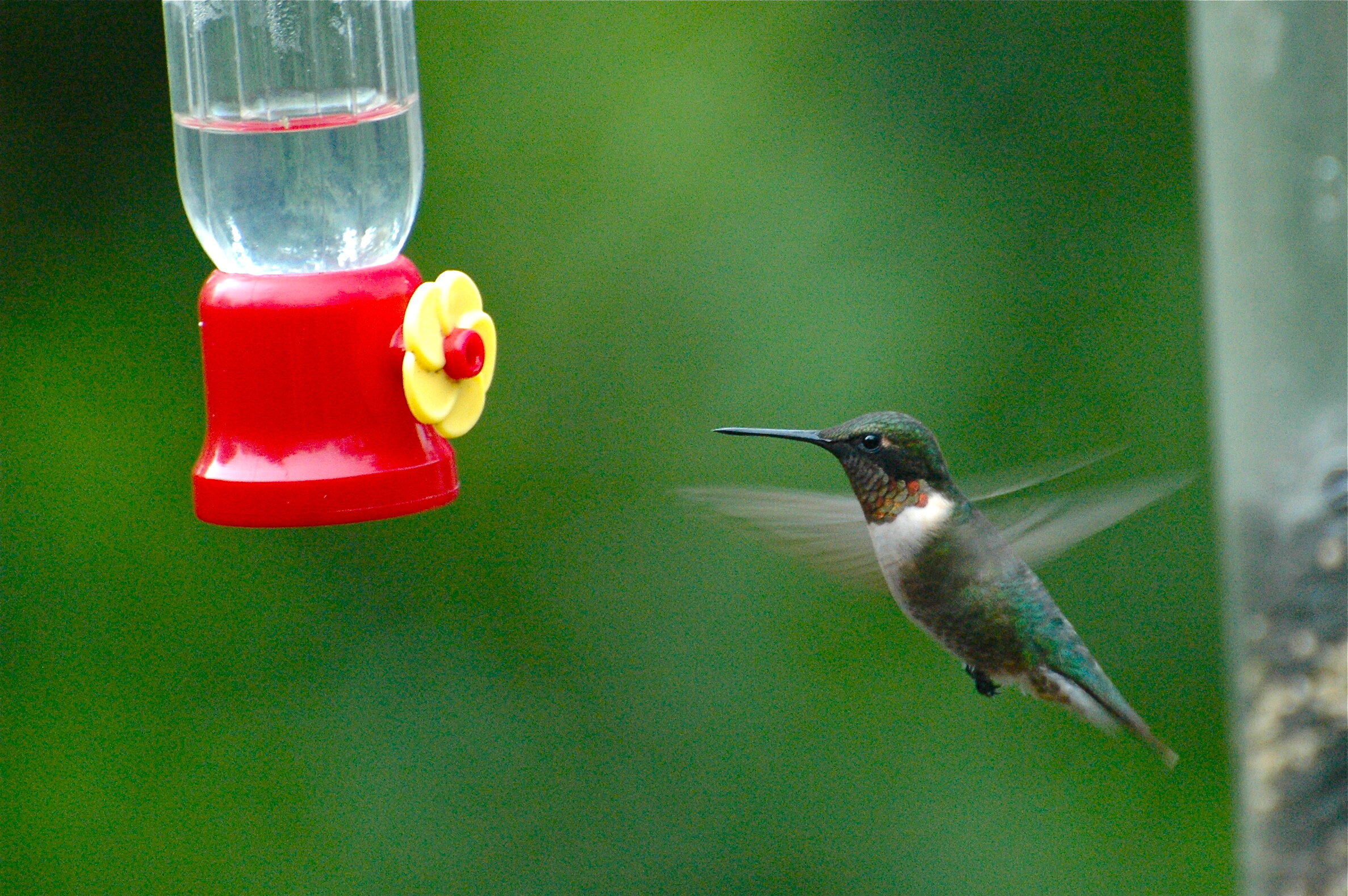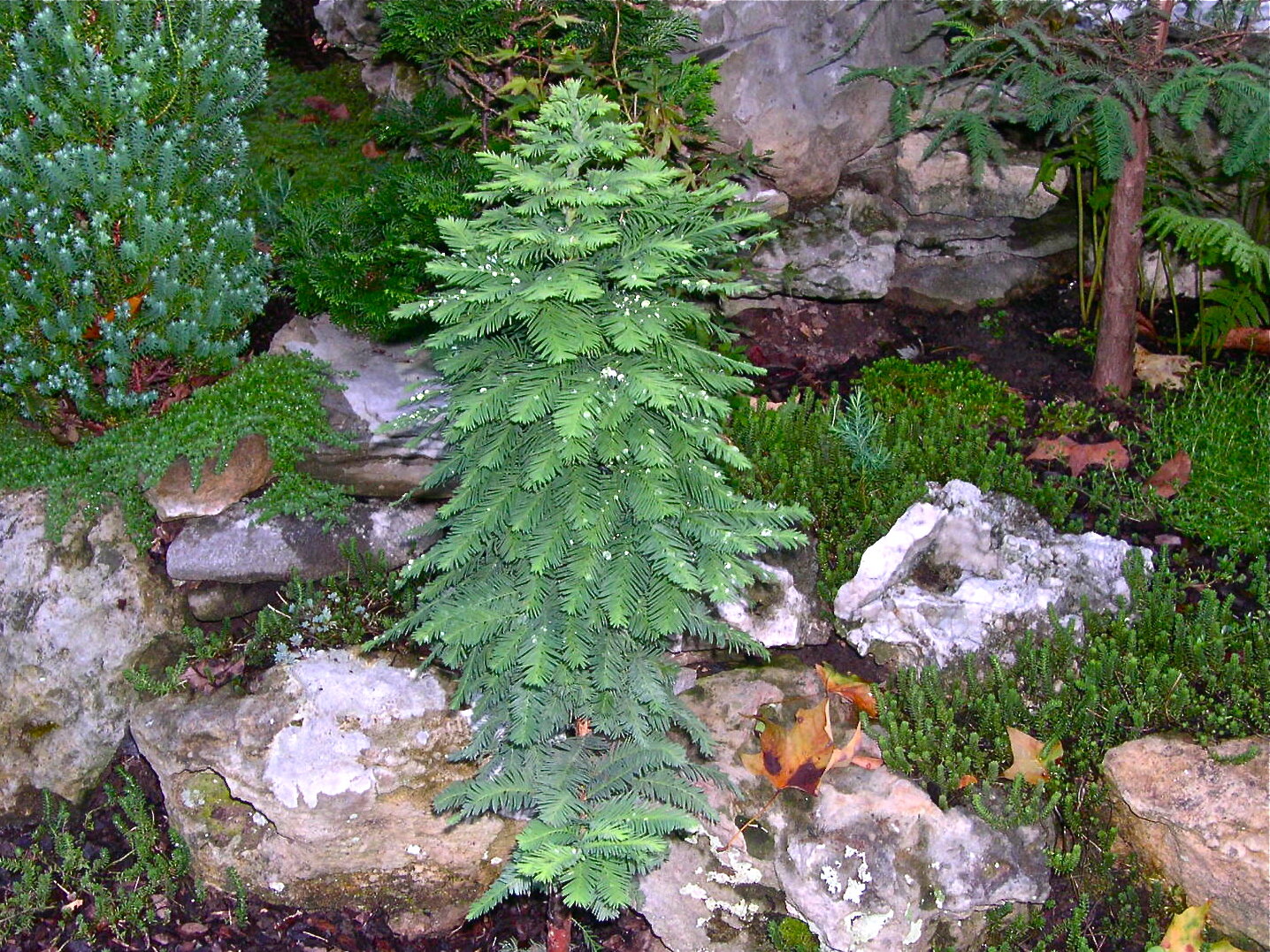Backyard Habitat Overview
My garden is becoming an additional room to our house. My home is located in a typical suburban neighborhood within three miles of town center Huntsville, Ala. The backyard is enclosed by a privacy fence bordering an area 40 by 80 feet. Since 2004, when the backyard was certified as a Wildlife Habitat, my gardening efforts have focused on converting the landscape into a habitat guided by the concepts promoted by the National Wildlife Federation. By applying these principals, my backyard habitat attracts birds in all seasons. I have recorded over 90 species to date.
Housing
My early approach to providing bird houses followed traditional wood and box fabricated structures. Now my approach focuses on more natural housing made of tree limbs and logs that have natural decayed centers creating the house cavity. I cut the logs into proper lengths, drill an access hole, and add simple tops and bottoms. The houses are either attached to trees with screws or hung from limbs with wire. My first payoff four years ago was attracting a family of House Wrens (that I had never observed before this time) and Carolina Chickadees that have continued to nest in my yard.
Water Features
My incorporation of water features for the birds evolved over many years. The first was a pedestal bird bath purchased 30+ years ago. About 10 years later a reflection pool was added to enhance the sitting area under my grape arbor. In 2004 a “natural water feature” specifically designed for attracting birds was added to the garden. A fourth water feature designed as a drip system with water flowing over a column of stones was added in 2007. In November of 2013, a fifth water feature was installed on my deck. This was a commercially purchased molded resin log configuration with a two gallon water reservoir and circulation pump. Landscaping and plantings around each water feature provides security for the birds and offers exceptional viewing enjoyment.
Bird Behavior
The success of attracting a wide variety of birds to my garden has provided many opportunities to observe bird behavior that is difficult to view in an outdoor setting. I have photographed: aggressive, water and dust bathing, courting, eating, flocking, preening, sunning, nesting, nurturing, sharing, pecking order, territorial defense, foraging and hunting behaviors all inside the comfort of my home. As a result, I have become much more sensitive to bird behavior throughout the seasons of the year.
Bird Portraits
Combining the habitat design elements of food, shelter, housing, and water has greatly enhanced the quality, quantity, and variety of birds visiting my garden. Birds come more often, stay longer, and exhibit many natural behavior characteristics for my enjoyment. This photo gallery displays some of the intimate close up observations I have began to record as “bird portraits”.
Birds at Water
Water is a key factor in creating an effective habitat to attract a wide variety of bird life. Moving water is magical. My “natural water feature” includes a buried 35-gallon reservoir for circulating water. The design, specifically for birds, incorporates stones, a small waterfall, a pool to amplify the water sound, and two shallow bathing pools. This water feature with adjacent plantings has proven very effective in attracting large quantities and many species of birds. To date, I have recorded 61 bird species at this water feature alone. The integration of other water features (pedestal, drip, reflective pool and a commercial molded resin log) also attracts many birds providing exceptional viewing throughout the day.
Natural Foods
Natural food sources for birds include trees, shrubs, vines, flowers, and leaf mulch. I am transforming my backyard landscape to include more of these food sources, both in quantity and variety, while taking advantage of existing plants in my garden and in my neighbors’ yards bordering my backyard. Understanding the flowering and fruiting cycle of natural foods has greatly enhanced my bird viewing by focusing on each food source when it’s food producing period is occurring. Natural foods are a major element to consider when gardening for the birds.
Sustainable Gardening
My approach to sustainable gardening has focused on constructing terraces and rock drains, and applying leaf mulch to reduce soil erosion, improve soil texture, and conserve water. I have reduced my grass lawn area by fifty percent and incorporated more area for leaf mulch and plants. Leaf mulch has the added benefit of providing an abundant source of natural food for birds throughout all seasons. Since insects provide high protein food source for young and adult birds, I do not use chemical pesticides in my garden.
Supplemental Feeding
Natural foods are seasonal and not continuously available for birds. My approach to supplemental feeding incorporates “treat feeding” that provides small amounts of a variety of foods daily. The presentation is done in a somewhat natural manner and minimizes waste while maximizing the time for observing birds during their feeding. Several of my feeders are personal designs that evolved over several years of observation. The designs not only reduce waste from my feeding avian visitors, but also deters chipmunks, raccoons, and squirrels. I take great pleasure in designing feeder techniques that foil unwanted, but appreciated quest, and provide hours of enjoyment watching birds feed.
Shelter and Security
Creating security for birds in my garden has focused on developing cover using plants to establish density, pathways and corridors allowing birds to move safely throughout the yard. Plantings include low growing shrubs, flowers, small trees and vines that create density from the ground up into the taller trees. This approach provides protection from predators and aggressive birds within the yard, at feeders and at water features. Thebenefits from applying these techniques has included more birds visiting the garden and coming to nurture their young. Over the past five years, an average of 40 families per year have nurtured their fledglings in my garden.
Bird’s-Eye View
A design feature in my garden is the creation of micro environments and structures that are familiar and comfortable to birds. The goal is to create small areas that add interest to the garden while providing natural conditions that attract a wide variety of birds. The approach incorporates ferns, mosses, rocks, water, and plants using bonsai techniques to achieve scale in my small backyard.


















